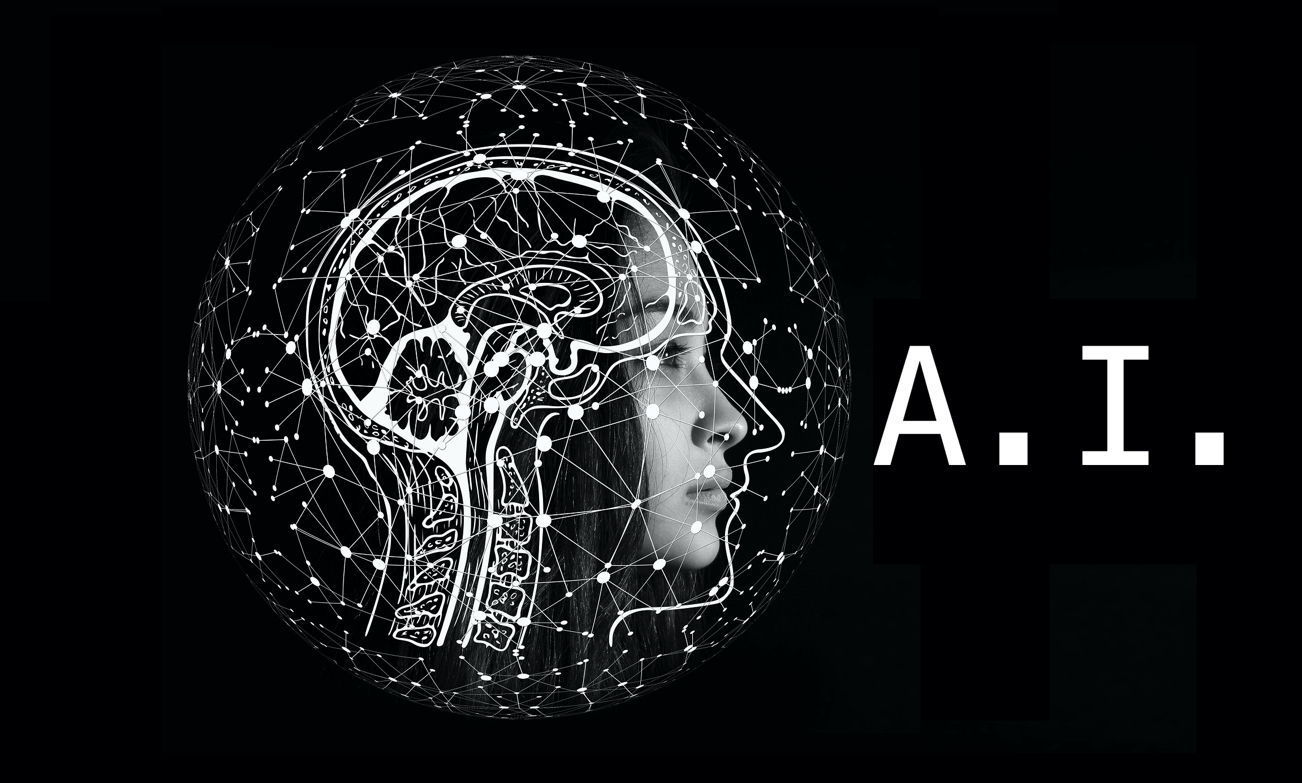Artificial intelligence (AI) is a broad discipline of computer science that involves building smart machines that smartly perform tasks that require human intelligence. AI is a multidisciplinary science with multiple approaches, but advances in machine learning and deep learning are causing a paradigm shift in almost every sector of the technology industry.
How Artificial Intelligence work?
Mathematician Alan Turing defeated the Nazi cryptographic machine Enigma, and less than a decade after helping the Allied forces win World War II.
Turing’s paper “Intelligence and Computing Machinery” and the subsequent Turing Test established the basic goals and vision of artificial intelligence.
The broad goal of artificial intelligence raises many questions and debates. Therefore, no single definition of this field is universally accepted.
The main limitation in defining AI simply as “intelligent construction machinery” is that it doesn’t really explain what artificial intelligence is. What makes a machine intelligent?
Peter Norvig and Stuart Russell tackle the problem by unifying their work on the subject of mechanical intelligent agents in the ground-breaking text Artificial Intelligence: A Modern Approach. With this in mind, AI is “research on agents that act by being perceived by the environment.”
Norvig and Russell continue to explore four different approaches that have historically defined the field of AI.
- Think humanly
- Think rationally
- Act humanly
- Act rationally
Processes and reasoning are though about the first two ideas that is think humanly and think rationally, the other ideas are about behavior. Norvig and Russell specifically focused on rational agents acting to achieve the best results, “with all the skills needed for the Turing test, agents can also act reasonably.
Patrick Winston, Ford Professor of Artificial Intelligence and Computer Science at MIT, explains AI as “a constraint-enabled algorithm exposed by expressions that support models for loops that connect thought, perception, and action.” Is defined as These definitions may seem abstract to the average person, but they help to focus the field as a field of computer science, with machines and programs that inject machine learning and other subsets of artificial intelligence. Provides a blueprint.
Speaking to the crowd at the 2017 AI Experience in Japan, DataRobot CEO Jeremy Achin began his speech by providing the following definitions of how AI is used today:
AI is also a computer system that perform actions that normally require human intelligence. Many of these artificial intelligence systems rely on machine learning, some on deep learning, and some on rules. I am using something very boring.
Types based on capabilities
Artificial intelligence generally falls into two categories:
Narrow AI: Narrow AI is also called a weak AI,” operates in a limited context and is a simulation of human intelligence. Narrow AIs often focus on performing a single task very well, and these machines may seem intelligent, but far more than most basic human intelligence. Works under the constraints and restrictions of.
Artificial Intelligence (AGI): AGI (also known as “Strong AI”) is a type of artificial intelligence that appears in movies such as Westworld robots and Star Trek: The Next Generation data. AGI is a machine with general intelligence that, like a human, can apply that intelligence to solve problems.
Narrow Artificial Intelligence
With narrow AI at hand, the most successful realization of artificial intelligence to date is easy. Narrow AI is focused on performing specific tasks, and according to “Preparing the Artificial Intelligence for the Future”, “has contributed significantly to society and contributed to the country’s economic vitality” over the last decade. Experienced a breakthrough. Obama administration posted a report in 2016.
- Examples of Narrow AI include:
- Google Search Engine
- Image recognition software
- Siri, Alexa, and other personal assistants
- Self-driving car
- IBM Watson
Machine Learning & Deep Learning
Many of Narrow AI is backed by breakthroughs in deep learning and machine learning . We need to understand the difference between deep learning, machine learning, AI and are often confusing. speculator Frank Chen provides a superb overview of the way to distinguish them.
“Artificial intelligence can be a set of algorithms and intelligence that try to mimic smart human brain. Deep learning is type of machine learning techniques. Simply feed computer with data and uses statistical techniques to “learn” how to incrementally improve a task, even if it is not specifically programmed for that task. It helps you avoid having to write millions of lines of code. Machine learning consists of supervised learning (using labeled data sets) and unsupervised learning (using unlabeled data sets).
Deep learning is common type of machine learning that performs inputs through a biology-inspired neural network architecture. A neural network contains many hidden layers in which the data is processed, so the machine can “deep” in learning, make connections, and weight inputs to get the best results.
Artificial General Intelligence
Creating a machine with human-level intelligence that can be applied to any task is a holy grail for several AI researchers, but the search for AGI is fraught with challenges.
The search for “Universal Algorithms for Learning and Action in All Environments” (Russel and Norvig 27) is not new, but time is essentially the difficulty of creating a machine with a full set of cognitive abilities. Does not relax.
AGI has long been a muse of dystopia science fiction. There, ultra-intelligent robots overtake humanity, but experts agree that this isn’t something that needs immediate attention.
Types based on functionality
1. Reactive Machine
The oldest and the most basic type of Artificial intelligence is Raective machine. Reproduces the human ability to respond to various types of stimuli. This type of AI does not have the memory capability and therefore lacks the ability to get better results using previously gained information/experience. Therefore, these kinds of AI do not have the ability to train themselves like the AIs you encounter today.
Example: Deep Blue, IBM’s chess supercomputer, is a perfect example of this kind of machine. Famous for defeating international grand-master Gary Kasparov in the late 1990s. Deep blue can identify the various pieces of the chess board and their movements. It can identify all possible legal moves for itself and its opponents. Select the best possible move based on your options. However, these machines do not have their own memory and cannot learn from past movements.
2. Theory of Limitation
Along with the power of Reactive Machines,these sort of AI, have memory capabilities in order that they can use past experience/information to form better future decisions. Many of the other common applications existing around us fall into this category. Many of these AI applications are often trained by an outsized volume of coaching data which they store within the IR memory in the sort of a reference model.
Example: In self driving cars, Limited Memory technology is employed in it. They store data speed of nearby cars, like GPS location, nature /size of obstructions among 100 other forms of knowledge to drive a bit like a person’s does.
3. Mind Theory
The theory of mind is the next level of AI, which is almost nonexistent in our daily lives. These types of AI are primarily in the “work in progress” stage and are usually confined to the lab. Once developed, these kinds of AI underestimate the human mind very deeply, down to their needs, likes, emotions, thought processes, and so on. Understanding the human mind and the whims of AI will allow AI to change its own reaction.
Example: Researcher Winston showed in his study a prototype of a robot that could walk in a small corridor with other robots coming from opposite directions, AI could predict and avoid other robots’ movements. You can rotate it to the right, left, or other ways Possibility of collision with an incoming robot. According to Wilson, this robot bases its actions on “common sense” of how other robots move.
4. Self-Aware AI
This is the final stage of AI. Its current existence is only a hypothesis and can only be found in science fiction movies. Not only do these types of AI understand and evoke human emotions, they can also have their own emotions. These types of AI have been around for decades, if not hundreds of years. AI skeptics are also this type of AI just like of Elon Musk. This is because, when self-aware, the AI goes into self-holding mode, which may consider humanity as a potential threat and endeavor to end it directly or indirectly.

